
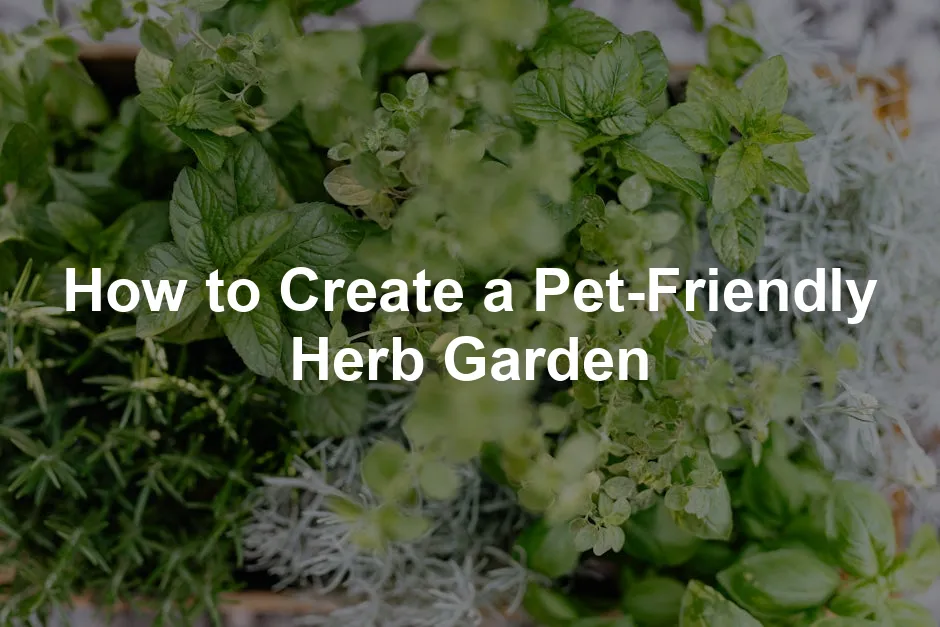
How to Create a Pet-Friendly Herb Garden
Introduction
Creating a pet-friendly herb garden is a brilliant idea! It’s a space where your green thumb can flourish alongside your furry friend’s well-being. Imagine a garden filled with aromatic herbs, where both you and your pets can benefit from the magic of fresh flavors and natural remedies.
Having an herb garden not only elevates your culinary creations but also enhances your pet’s health. Fresh herbs can aid digestion, freshen breath, and even have calming effects. Plus, growing your own herbs means you know exactly what goes into your garden—no mystery ingredients!
However, it’s crucial to choose safe herbs for your pets. Some plants can be harmful, so knowing which herbs are non-toxic is essential. Let’s dig into why you should create a pet-friendly herb garden and how to make it happen!
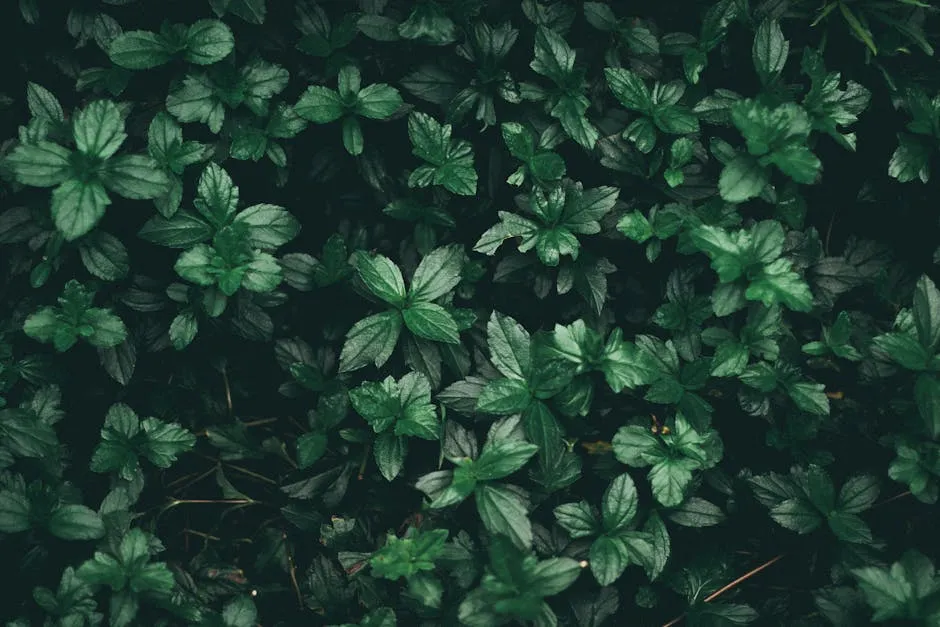
Why Create a Pet-Friendly Herb Garden?
Fresh herbs are like little bundles of joy for both pets and humans alike. They add vibrant flavors to meals and can even provide health benefits for your furry companions. Many herbs, such as parsley and basil, can aid in digestion and offer calming properties. Imagine how delightful it would be to sprinkle chopped basil in your pasta while knowing it also helps soothe your pup’s tummy!
In addition to health benefits, gardening itself offers environmental perks. It reduces your carbon footprint while promoting biodiversity. Plus, there’s something therapeutic about digging in the dirt alongside your pet. You’ll both enjoy the fresh air and sunshine, making it a rewarding shared activity.
Creating a pet-friendly herb garden is not just about the plants—it’s about the joy of gardening together. Your pet can enjoy the lively scents and vibrant colors, while you nurture a space that brings you closer. So grab your gardening gloves and let’s make a sanctuary for both you and your four-legged friend!
Creating a pet-friendly herb garden is essential for ensuring your furry friends can safely enjoy the garden. How to create a pet-friendly herb garden
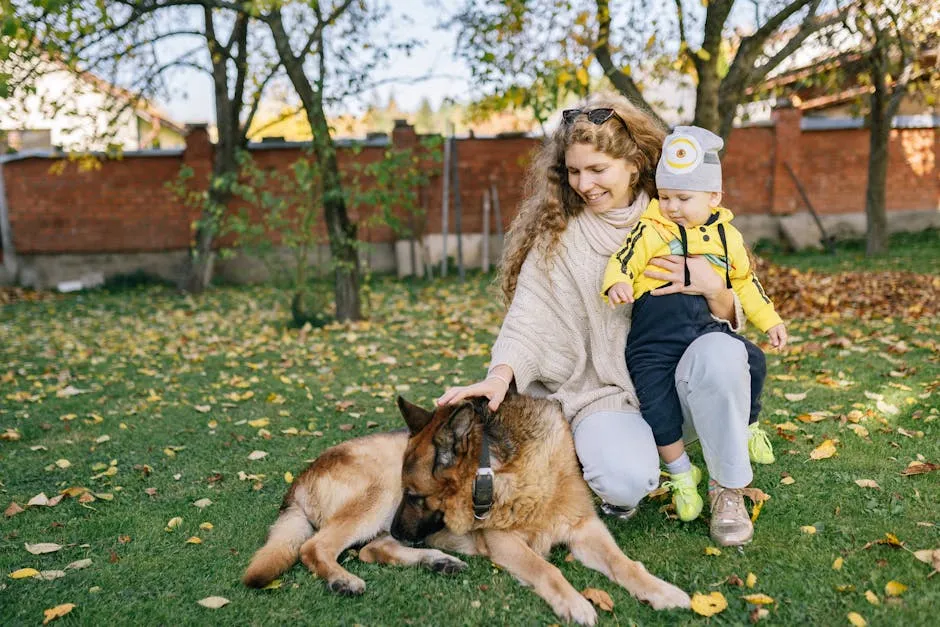
Choosing the Right Herbs
Best Pet-Friendly Herbs
Parsley: This herb is a superstar! Not only does it freshen your dog’s breath, it’s packed with vitamins A, C, and K. Parsley grows well in well-drained soil and loves sunlight. It’s easy to care for and can be snipped regularly to encourage more growth.
Basil: A must-have for any kitchen garden, basil boasts anti-inflammatory properties. It helps with skin irritations and is perfect for flavoring dishes. Basil thrives in warm weather and well-drained soil. Remember to pinch off the flower heads to keep it bushy! You can start your journey with organic basil seeds that will have your garden smelling divine!
Rosemary: This fragrant herb is known for its antioxidant properties. Rosemary can improve digestion and enhance memory. It requires plenty of sunlight and well-drained soil. A little goes a long way, so use it sparingly in your pet’s meals.
Thyme: This low-growing herb is not just delicious; it’s also packed with vitamins. Thyme has antimicrobial properties that can support respiratory health. It prefers full sun and is drought-tolerant, making it easy to maintain.
Mint: Who doesn’t love mint? It’s refreshing and soothing for both humans and pets. Mint can help soothe upset stomachs and freshen breath. It grows best in partial shade and should be planted in a pot to prevent it from taking over your garden. Consider using organic mint seeds to get started!
By choosing these pet-friendly herbs, you create a safe environment for your furry friends to explore and enjoy. Just remember to research any new additions to your garden to ensure they’re safe for pets. Happy planting!
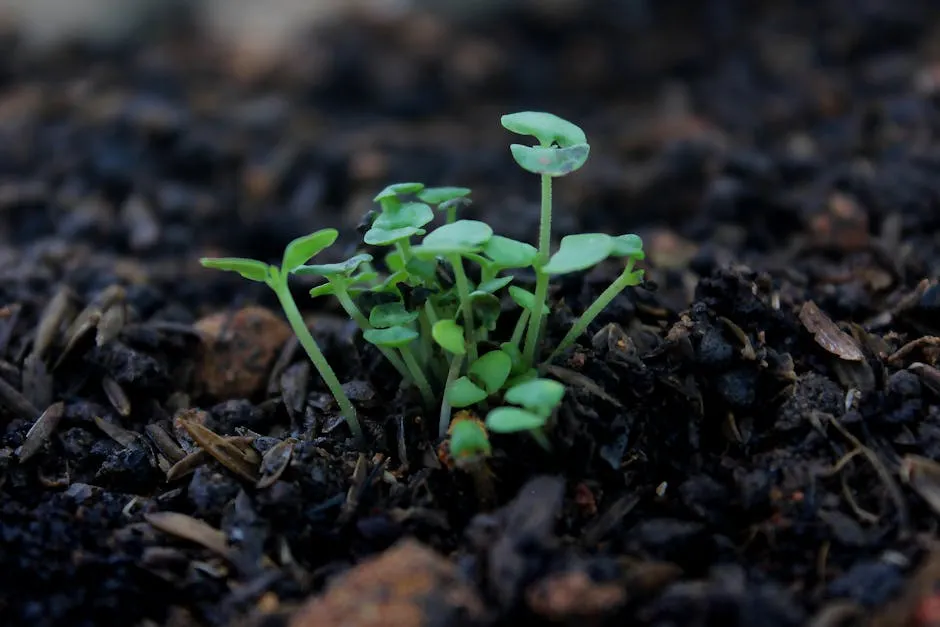
Herbs to Avoid
Creating a pet-friendly herb garden is a fantastic idea! However, not all herbs are safe for our furry companions. Some can cause serious health issues if ingested. Here’s a rundown of common herbs and plants to steer clear of when gardening with pets in mind.
Garlic is a culinary favorite, but it’s toxic to dogs and cats. Even small amounts can lead to gastrointestinal upset and more severe health problems. Similarly, chives belong to the onion family. They can cause similar reactions and lead to hemolytic anemia in pets.
Onions are another no-go. They can wreak havoc on your pet’s red blood cells. Cocoa is often overlooked, but it contains theobromine, which is toxic to both dogs and cats. While it’s a treat for humans, it’s a definite danger for pets.
Lavender might seem harmless, but it can cause nausea and other distressing symptoms in pets if ingested. Sage is another herb to avoid. While it’s great for flavoring your dishes, it can be toxic to dogs.
Before introducing any new plants to your garden, take the time to do a little research. It’s critical to ensure your chosen herbs are safe for pets. This will help prevent any accidental ingestions and keep your furry friends happy and healthy.
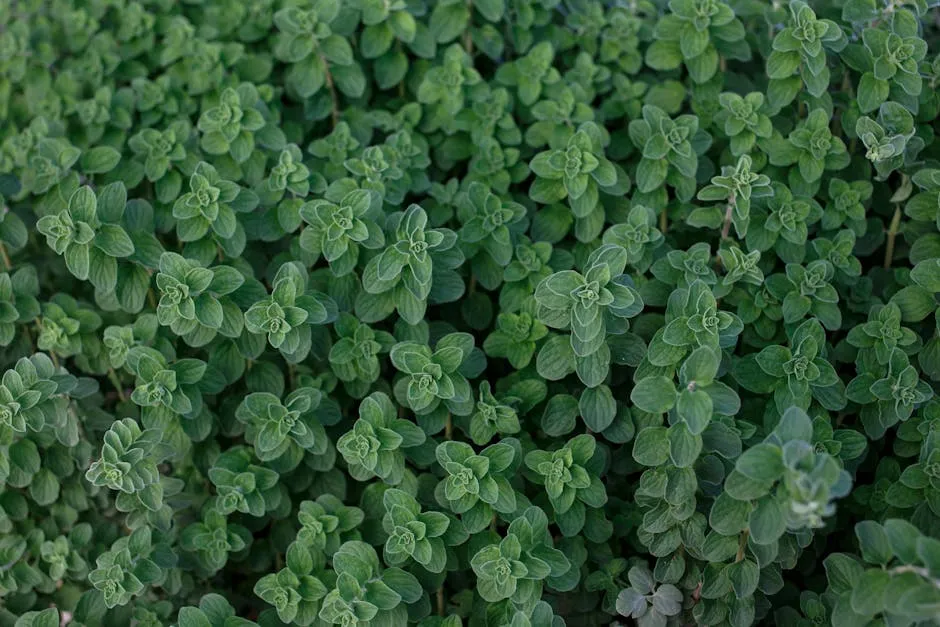
Planning Your Herb Garden
Location and Layout
Choosing the right location for your herb garden is key! Aim for a spot that gets plenty of sunlight but is also safe from curious paws. A sunny balcony or a raised garden bed can be ideal. Keep in mind that some pets love to dig. Consider placing your herbs in containers, which can be elevated and out of reach.
If in-ground planting is your preference, create a designated space in your yard that’s away from your pet’s usual play areas. Planting herbs in a corner of the garden can help minimize the likelihood of accidental trampling.
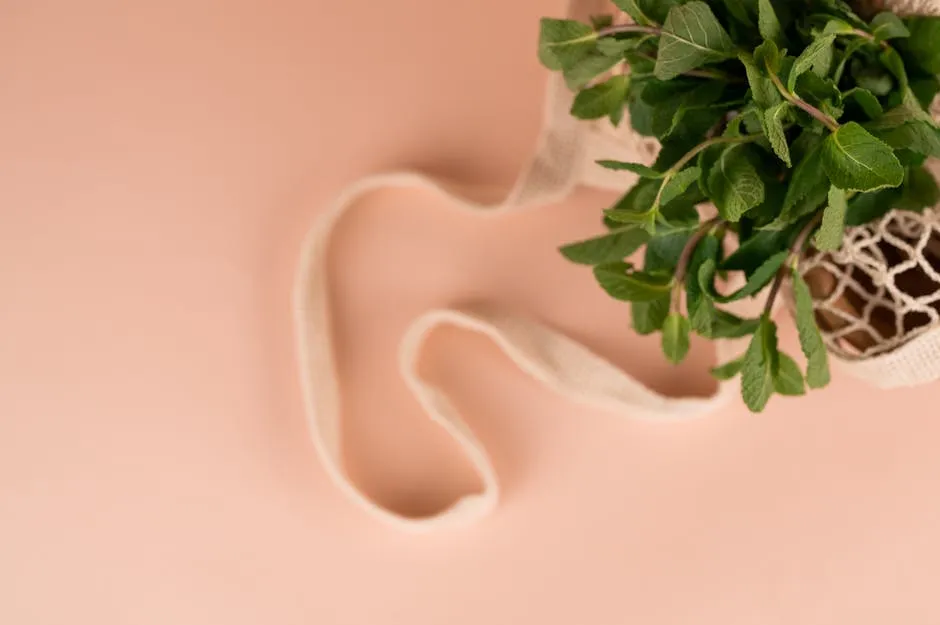
Tools and Materials Needed
Before you start planting, gather essential tools. You’ll need pots or garden beds, quality potting soil, and a watering can with narrow spout. Don’t forget about gardening gloves, a trowel, and perhaps even some plant markers to keep track of your herbs!
Using high-quality organic potting soil is crucial. It ensures that your herbs get the nutrients they need while promoting drainage. Good drainage prevents water from pooling, which can lead to root rot. Invest in pots with drainage holes to keep your herbs thriving.
Creating a pet-friendly herb garden is all about preparation. With the right tools and a well-thought-out layout, you’ll set the stage for a flourishing garden that both you and your pets can enjoy!

Maintaining Your Pet-Friendly Herb Garden
Regular Care and Monitoring
Your herb garden thrives on regular care, and that includes watering and pruning. Herbs need consistent moisture, but avoid soggy soil! Water them when the top inch of soil feels dry. Use a gentle touch; a watering can with a narrow spout works wonders.
Pruning is like giving your herbs a stylish haircut! Trim back any leggy growth to encourage bushier plants. Regular snipping not only sparks new growth but also keeps your herbs looking fabulous. Plus, it gives you a chance to enjoy the fresh aroma!
Keeping your garden safe for pets is crucial. Create boundaries within the garden area. Use small fences or decorative rocks for garden borders to keep playful paws at bay. If your pets love to dig, designate a safe digging spot nearby. This way, they can unleash their inner gardener without wreaking havoc on your herbs.

Harvesting Herbs Safely
When it comes to harvesting, timing is everything! The best time to gather herbs is in the morning when the oils are at their peak. Snip a few leaves or sprigs, but don’t overdo it—leave enough for the plant to keep growing.
Incorporating fresh herbs into your pet’s diet can be a delightful treat! Start small. Chop a tiny amount of safe herbs, like parsley or basil, and mix it into their food. Always observe their reaction. If your pet enjoys the taste, you’re on the right track!
Remember, moderation is key. While herbs can offer benefits, they should complement your pet’s diet, not replace it. If in doubt, check with your veterinarian before introducing new herbs. This way, you ensure your furry friends stay healthy and happy!
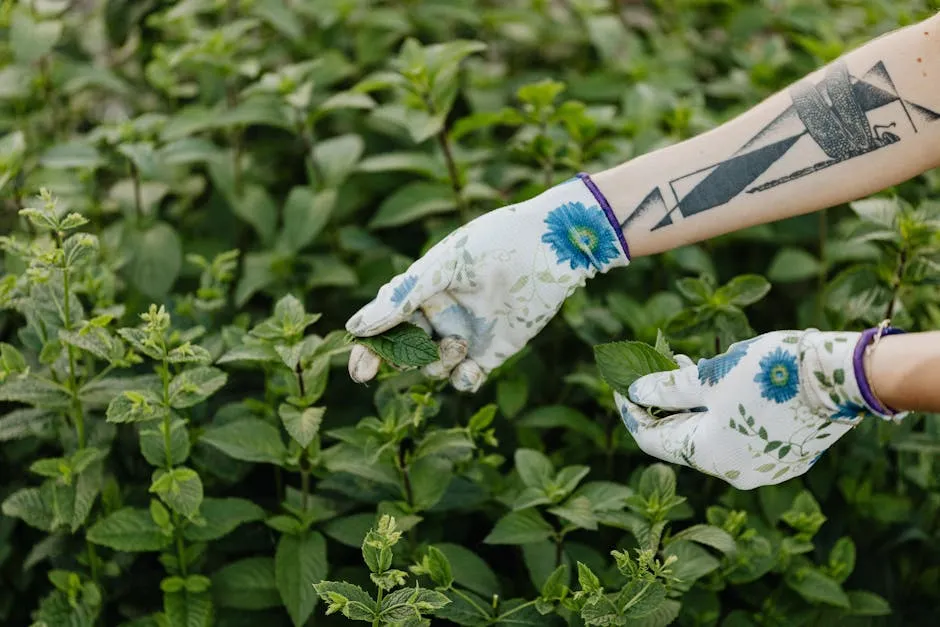
Interactive Gardening with Your Pet
Creating a pet-friendly space in your garden can be a delightful experience for both of you! Think of ways to include your pets in the gardening process. Allow them to sniff and explore the plants as you work. You can even create a designated play area. Fill it with soft grass or mulch, and toss in some pet-friendly outdoor toys. This makes for a cozy spot where they can relax while you garden.
Consider making safe digging spots in your garden. Dogs love to dig! Using a corner of your yard, designate a digging area filled with loose soil. This lets your pup dig to their heart’s content without ruining your herbs.
To further engage your pets, try planting herbs that attract their attention. Catnip for cats or a patch of wheatgrass can keep them entertained. Just remember to supervise them during playtime. This ensures they don’t nibble on any herbs that aren’t safe.
By creating an interactive space, you foster a bond with your pet while enjoying the fruits (or herbs) of your labor. Gardening together can be a fun adventure where tails wag and laughter fills the air!
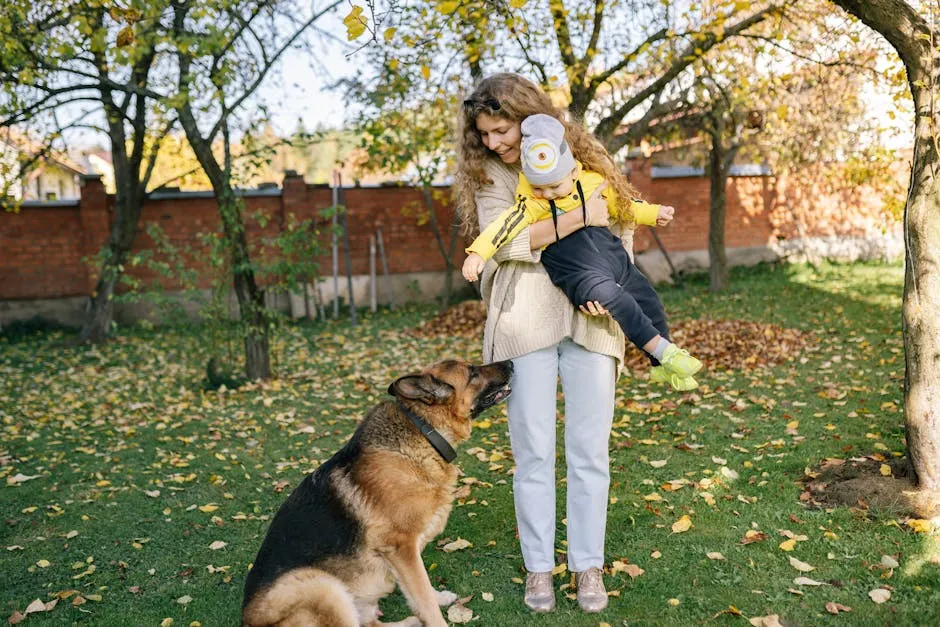
Common Mistakes to Avoid
Creating a pet-friendly herb garden can be a delightful journey, but there are pitfalls to dodge along the way. One of the most significant mistakes is planting toxic herbs. For example, garlic and chives may add flavor to your meals, but they can wreak havoc on your pets’ health. Before planting, double-check that every herb is safe. A quick online search can save you from a veterinary visit later!
Overwatering is another common blunder. It’s easy to think more water equals happier plants, but soggy soil is a recipe for root rot. Make sure your pots have drainage holes. Water only when the top inch of soil feels dry. Your herbs will thank you, and so will your pets!
To pet-proof your garden area, consider boundaries. Fencing is a fantastic way to keep curious paws at bay. Even a decorative rock border can do the trick! If you’re growing herbs in containers, elevate them out of reach. Also, designate a digging area for your pet. This will keep them entertained while your herbs thrive.
Lastly, remember to supervise your pets while they explore the garden. This ensures they stick to the safe herbs and stay clear of any trouble. With these tips, you’ll create a flourishing herb garden that’s safe and enjoyable for everyone!

Conclusion
Creating a pet-friendly herb garden isn’t just a trend; it’s a rewarding venture for both you and your furry friend. Not only do you get fresh, aromatic herbs for your dishes, but you also provide your pet with safe, healthy options. Herbs like parsley and basil can aid in digestion and keep your pet’s breath fresh. Plus, gardening together fosters a unique bond.
Imagine your dog happily trotting around your garden, enjoying the scents, while you snip fresh basil for dinner. How delightful is that? Starting your own pet-friendly herb garden is easier than you think. You can transform your outdoor space or a sunny windowsill into a thriving oasis.
So, roll up your sleeves, grab those seeds, and get planting! You can kick off your garden journey with our herb garden starter kit. Share your experiences with your pets as you cultivate this green paradise. Don’t forget to snap some photos to show off your gardening prowess. Happy gardening!
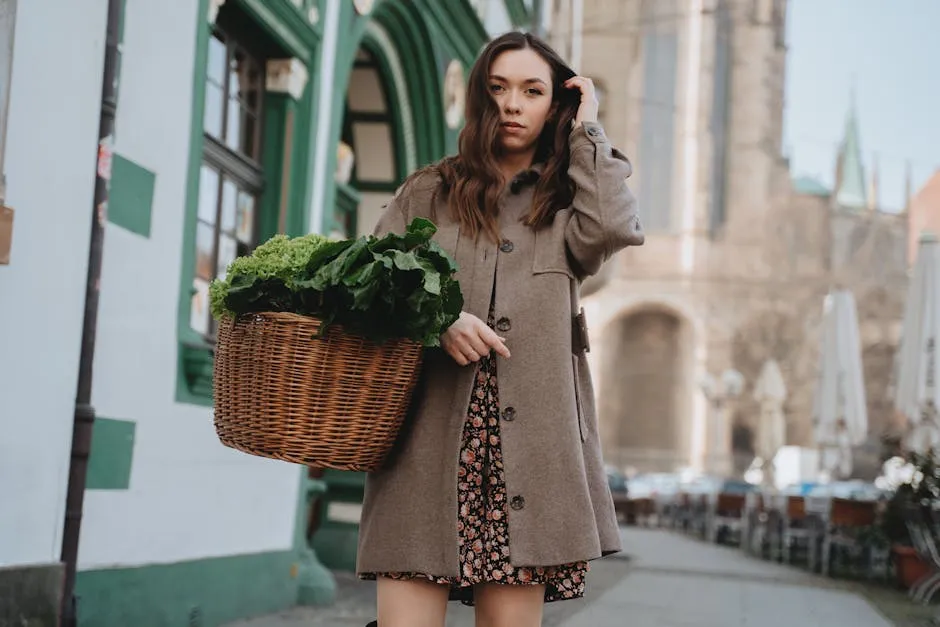
FAQs
Can all dogs eat herbs?
While many herbs are safe for dogs, moderation is key. Some, like basil and parsley, can be beneficial in small amounts. Always consult your vet before introducing new herbs to your pet’s diet to avoid any surprises.
What if my pet eats a toxic plant by accident?
If your pet accidentally ingests a toxic plant, don’t panic! First, try to identify the plant and note how much your pet ate. Contact your veterinarian immediately for advice. They may suggest bringing your pet in for an examination. It’s always better to be safe than sorry!
How do I introduce new herbs to my pet’s diet?
Start slow! Add a pinch of fresh herbs to your pet’s food. Observe for any adverse reactions. If all goes well, gradually increase the amount. This method helps your pet adjust to new flavors without any tummy troubles.
What are the best containers for growing herbs indoors?
When growing herbs indoors, choose containers with good drainage. Clay pots are great for moisture control, while ceramic pots add a touch of style. Ensure they’re big enough to allow for growth without overcrowding.
How can I keep my pet from digging up my herbs?
To deter digging, consider using a physical barrier like a fence around your garden. You can also place rocks or garden decor to make the area less appealing. Alternatively, create a specific digging area for your pet to satisfy their instincts while keeping your herbs safe.
Please let us know what you think about our content by leaving a comment down below!
Thank you for reading till here 🙂
All images from Pexels



